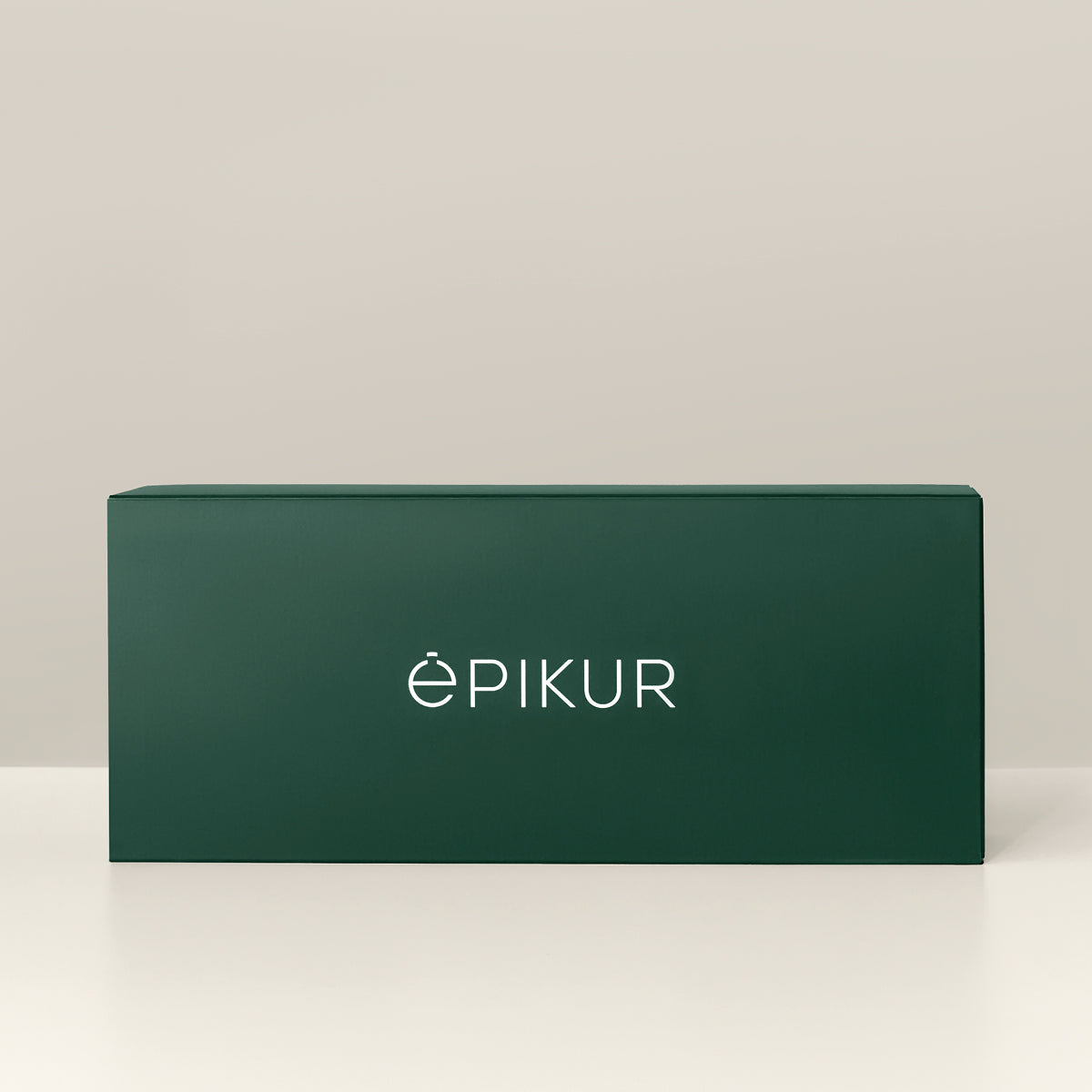THE INTESTINE
Physiology or how does digestion work
The digestive tract is a fascinating interplay of various organs. Here, food is ingested, broken down, utilized, and absorbed, and indigestible residues are excreted. Each organ has specific functions and physiological characteristics. Digestion is divided into mechanical and chemical processes.
The two major tasks of digestion are:
- Dismantling of large structures
- Conversion into a form suitable for absorption
We start with the oral cavity and its microbiome:
Oral cavity and oral microbiome – The gateway to health
Food isn't just broken down in the mouth. Digestion also begins here, and we have our first immunological protection against everything that enters our world through the mouth. Our intestinal barrier begins with our oral barrier.
Function in general:
- mechanical grinding of food
- Movement of food pulp through the tongue
- Swallowing reflex
- Production of saliva, about 1 liter per day
Functions of saliva:
- Pre-digestion of carbohydrates by the enzyme amylase
- Pre-digestion of fats by the enzyme lingual lipase
- Coating of the food pulp with mucus for the swallowing process
- Moisturizing the oral cavity
- Defense against viruses, bacteria and fungi
- Control of oral flora and plaque
- Neutralization of toxins
- Buffering of food acids
- Protection and remineralization of teeth
- Protection of the oral mucosa
- Regulation of the pH value
- Makes speaking easier
- Taste perception – releases flavors and delivers them to the taste buds
The functions of saliva are diverse, as are its effects on health and disease. Therefore, optimal saliva composition and production are extremely important.
What influences our oral cavity and what effects does it have?
- Nutrition: Our food has a major impact, both positively and negatively. It promotes or inhibits pathogenic germs, influences the pH of saliva, and influences the oral microbiome.
- Respiration – Air composition: Our air contains particles that interact with our mucous membranes. Humidity influences saliva flow, mucous membranes, and mucociliary clearance (the function of the cilia).
- Mouth/nasal breathing: Nasal breathing is the healthy norm, while mouth breathing is considered a silent nuisance – it negatively affects saliva flow, pH, and the oral microbiome.
- Alcohol: Alcohol negatively affects saliva secretion and promotes the growth of pathogenic germs.
- Smoking: Smoking impairs blood circulation to the gums, reduces saliva production, and weakens the immune system.
- Medications: Medications can cause mucosal changes, changes in pH, and a reduction in salivary flow.
The oral microbiome
The oral microbiome consists of more than 700 known species of bacteria, fungi, viruses, and archaea that colonize the mouth. A healthy oral microbiome is dynamically balanced and fulfills important functions.
- it protects us from disease-causing germs
- it produces antimicrobial substances (e.g. bacteriocins, hydrogen peroxide)
- it regulates and supports the oral immune system
- it prevents inflammations, e.g. gingivitis and periodontitis
- it helps regulate the pH of saliva
- it helps prevent tooth decay
- it helps promote metabolic health and cardiovascular balance (systemic effect via the oral mucosa)
- it helps fight infections in the upper respiratory tract
- Together with saliva, it helps prepare for healthy digestion
Influence of the oral microbiome locally and systemically:
A disruption of the oral microbiome balance—for example, due to periodontitis—can lead to a sustained increase in the release of pro-inflammatory cytokines. These immune system messengers enter the body via saliva, the blood vessels in the gums, or through swallowing. Microbial components such as endotoxins (e.g., lipopolysaccharides, LPS) can also enter the body. These substances activate inflammatory signaling pathways, particularly via Toll-like receptors, which distinguish between "friend" and "foe." This can promote systemic low-grade inflammation.
Care (prevention) & Cure (therapy) of our oral cavity and the oral microbiome
A healthy oral microbiome is a silent but powerful ally for our systemic health. To promote and stabilize it, simple, holistic dietary and lifestyle measures are often sufficient.
Key measures for a healthy oral microbiome
1. Gentle but consistent oral hygiene
- Brush your teeth at least twice a day
- Floss once a day
- Clean your tongue
- 1-2x/year professional teeth cleaning
- Objective: to control harmful biofilms and plaque without disturbing the oral balance
2. Feed the good bacteria
- Reduced consumption of sugar and refined carbohydrates deprives pathogenic bacteria of their main food source and helps maintain a balanced pH in saliva.
- Fiber also promotes the oral microbiome
- Fermented foods contain health-promoting and sustaining microbes
- Green tea (organic) – contains antibacterial polyphenols against Streptococcus mutans
- Drink enough water
- Pro-Oral Foods*
3. Stress regulation and sleep
- Stress changes the composition of saliva
- Healthy sleep is also regenerative for the oral mucosa and the immune balance
4. Avoid smoking and excessive alcohol consumption
- Tobacco massively alters the oral microbiome – in favor of pathogenic germs
- Alcohol (especially high-proof alcohol, which can also be found in mouthwashes) disrupts the microbial symbiosis
5. Clean and humid air
- Regular exercise in the fresh air in nature
- Ventilate rooms regularly
- Avoid dry air in rooms
Epikur Trilogy
For your intestinal health.
Studies:
- Sato, J., et al., Oral microbial dysbiosis is associated with systemic inflammation and metabolic syndrome, mBio, 11(6):e03040-20. DOI: 10.1128/mBio.03040-20
- de Vos, WM et al. (2022). Gut microbiome and health: mechanistic insights. Good, 71(5), 1020-1032. DOI: 10.1136/gutjnl-2021-326789
- Sato, J. et al. (2020). Oral microbial dysbiosis is associated with systemic inflammation and metabolic syndrome. mBio 11(6):e03040-20. DOI: 10.1128/mBio.03040-20
- Marsh, P.D. (2006). Dental plaque as a biofilm and a microbial community – implications for health and disease. BMC Oral Health, 6(Suppl 1), p14. DOI: 10.1186/1472-6831-6-S1-S14
- Sheiham, A. & James, WPT (2015). A new understanding of the relationship between sugars, dental caries and fluoride use. Advances in Nutrition, 6(1), 17-21.
- Arweiler, N. B. & Netuschil, L. (2016). The Oral Microbiota. Advances in Experimental Medicine and Biology, 902, 45–60.
- Dawes, C. (2008). Salivary flow patterns and the health of hard and soft oral tissues. Journal of the American Dental Association, 139(Suppl), 18S-24S.
- Kumar, P.S. et al. (2011). Smoking significantly affects subgingival microbiota. Journal of Clinical Periodontology, 38(9), 835-842.
- Genco, R.J. et al. (1999). Relationship of stress, distress and inadequate coping behaviors to periodontal disease. Journal of Periodontology, 70(7), 711-723.
- Burton, J.P. et al. (2006). Reduction of oral malodor by probiotics with lactobacilli: a randomized, double-blind, placebo-controlled study. Oral Microbiology and Immunology, 21(2), 111–118.
- Dennis A Savaiano, Robert W Hutkins, Yogurt, cultured fermented milk, and health: a systematic review. Nutrition Reviews, Volume 79, Issue 5, May 2021, Pages 599–614,
- Miller, GE et al. (2006) Psychological stress and the human immune system: a meta-analytic study of 30 years of inquiry. Psychological Bulletin
- Kazuhisa Yamazaki * Oral-gut axis as a novel biological mechanism linking periodontal disease and systemic diseases: A review. Laboratory for Intestinal Ecosystem, RIKEN Center for Integrative Medical Sciences, 1-7-22 Suehiro-Cho, Tsurumi-Ku, Yokohama, Kanagawa 230-0045, Japan






